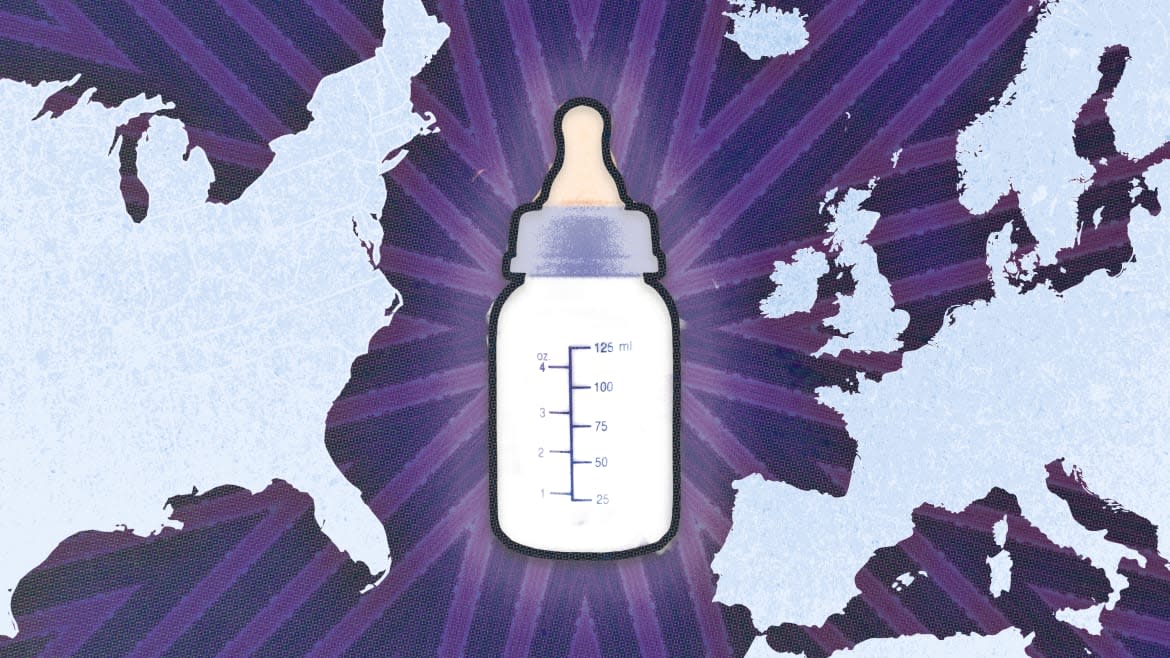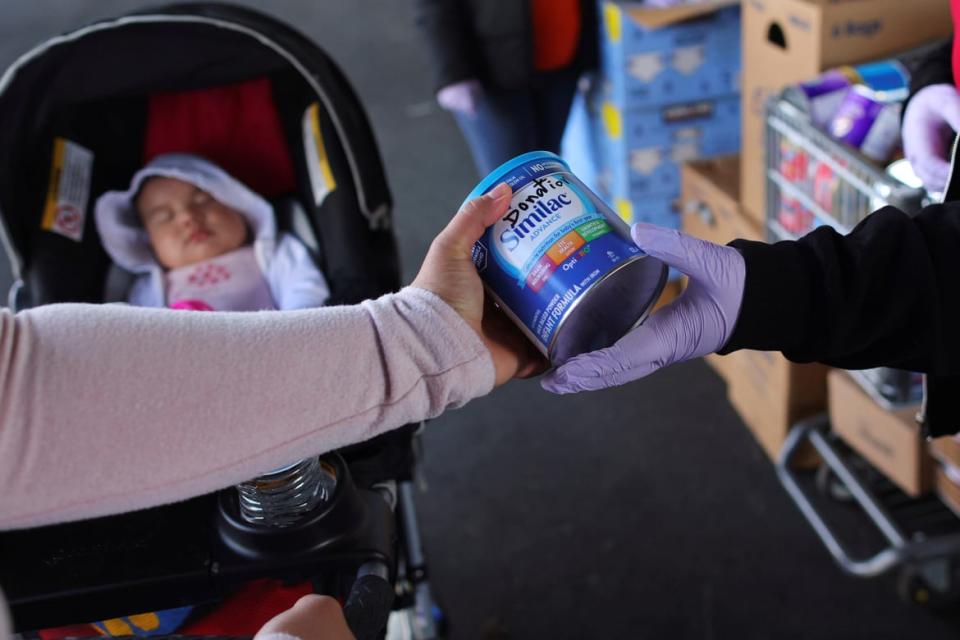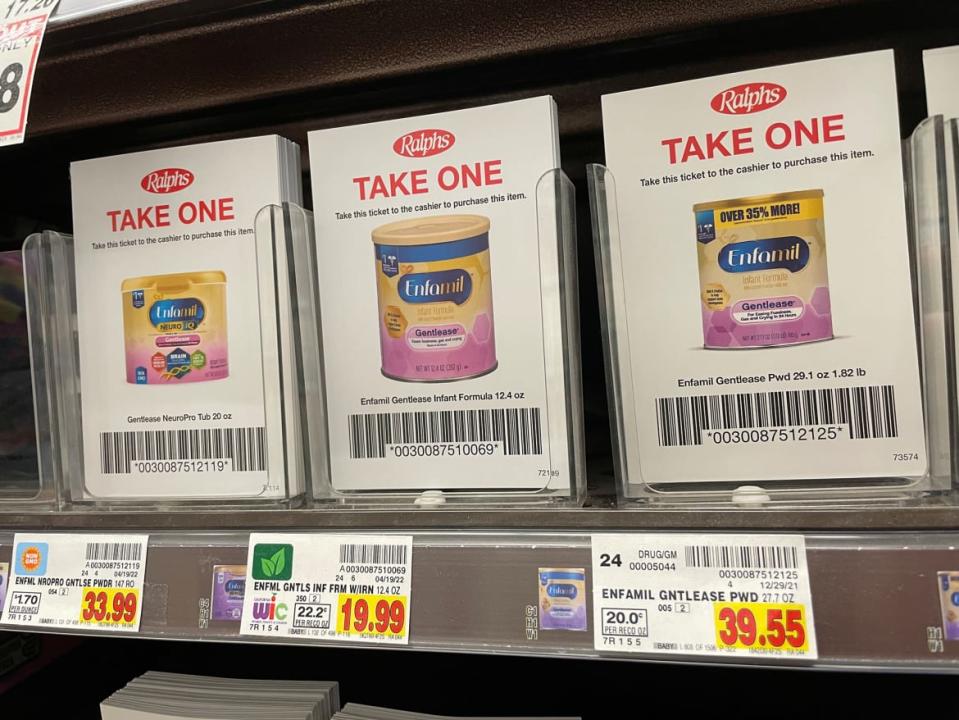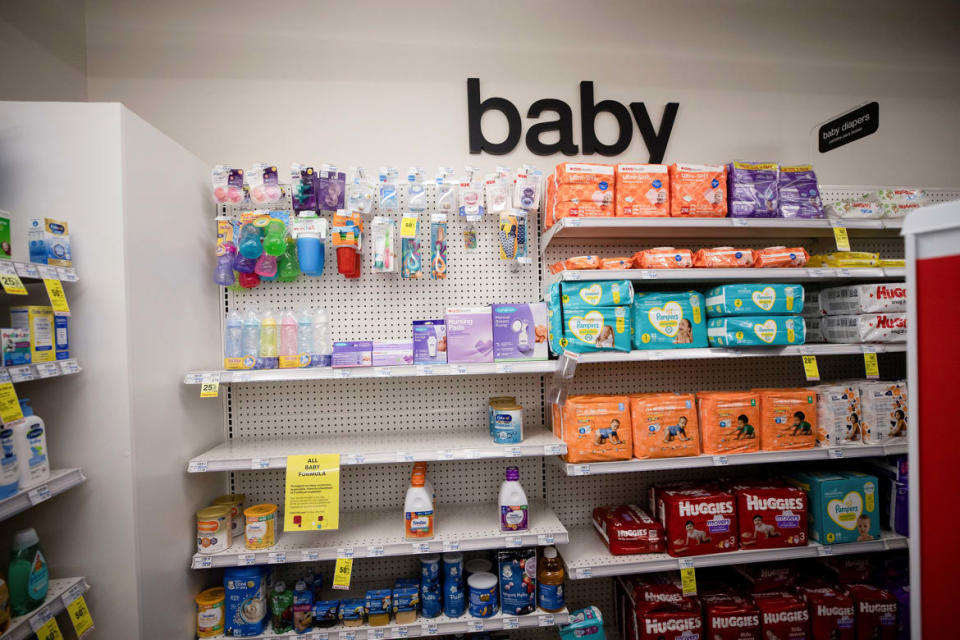How in the World Is the Baby Formula Crisis Still Going?

If you searched “baby formula shortage,” the top results assume you have last year’s crisis in mind.
“In 2022,” begins the suggested Wikipedia page, many American families struggled to buy enough formula because of a coincidence of federal import restrictions and domestic production problems, the latter exacerbated by the fact that 90 percent of U.S.-made formula comes from just four companies.
But the formula shortage isn’t only last year’s crisis. It’s still happening—not on the same scale, thankfully, and not everywhere at once.
National Divorce Is More Popular Than You Think
Your local store may be well-stocked, but others are empty or chronically depleted, and some retailers are limiting how much families can buy at once. How is this not over yet?
Domestic consolidation of the formula market is still a factor, as it magnifies the effects of factory shutdowns and incidents like the Enfamil recall last month. But factories aren’t easily built, and market share isn’t easily gained, especially with a product as tightly regulated as baby formula. We can’t expect new producers to spring up overnight.
Happily, there’s another way to bring lots more formula to the American market: Nix the dumb protectionist policies raising prices and constricting supply.
Formula protectionism has two main pieces, as a recent Cato Institute briefing explains. One is tariffs—taxes on formula imports which have an average effective rate of 25 percent.

A mother receives free baby formula, amid continuing nationwide shortages in infant and toddler formula, at a food pantry run by La Colaborativa in Chelsea, Massachusetts on May 18, 2022.
Protectionists like to claim these will be paid by foreigners—former President Donald Trump loved to insist China was “paying billions and billions” because of his tariffs—but that’s simply not how it works.
Foreign manufacturers don’t eat tariff costs out of the goodness of their hearts, not even when the product is food for literal babies. They pass it along to the end consumer in the form of higher prices. Functionally, you pay the tax. Import tariffs are taxes on the American public.
Sometimes those higher prices encourage consumers to switch to other products—that’s the protectionists’ fallback claim when the reality of the tax bill becomes clear. Artificially hiking the price of foreign goods will make their American-made counterparts the cheaper option by comparison.
But with formula, that’s far easier said than done. Many parents can’t switch to another brand because they’ve only found one that works well for their infant, and by “works well” I mean “does not make the child wail in inconsolable distress six to eight times per day.”
Made in the USA! sounds nice, but it doesn’t sound as nice as a baby who can finally eat without screaming. The most patriotic parents in America won’t torment their kid just to support dairy farmers. When my family found a European formula that worked for our twins, we’d have stuck with that brand even if the tariff doubled, not because we had money to burn but because all the others we’d tried—including expensive, organic, American options—made each feeding a debacle.
Why Are Democrats Making It Harder to Hire Child Care Workers?
And families who use imported formula aren’t the only ones who suffer because of these taxes. Other families are indirectly affected by tariff-induced price hikes, as research has found that “with tariffs on their foreign competitors, domestic producers can safely raise their prices.” For instance, if tariffs make the price of European formula go from $24 to $30 a jar, U.S. producers that might otherwise have charged $25 can hike their prices to $27. Even with the “cheaper” American option, you’re paying more.

Enfamil baby formula, produced by Mead Johnson, is seen in a supermarket as inflation continues to hit consumers amid continuing nationwide shortages in infant and toddler formula, in Los Angeles, California on May 27, 2022.
Congress suspended formula tariffs last summer by a near-unanimous vote, admitting, as Rep. Suzan DelBene (D-WA) said at the time, that “[r]emoving tariffs on foreign formula will help provide families a real discount and get product on shelves.” But, without a renewal, the suspension expired at the end of 2022. Congress let it happen.
The other big piece of formula protectionism are non-tariff limits (like a ceiling on how many tons of formula we can import from Mexico each year) and extensive regulations.
“Most notably,” the Cato report says, “the FDA imposes strict nutritional, labeling, and other standards and requires retailers to notify the agency at least 90 days in advance of selling a new formula product—and that is after manufacturers of new brands have submitted detailed explanations of the development of the formula, the results of clinical trials and studies on the nutrients in the formula, and details on quality controls in the production facilities, as well as having undergone FDA sampling and inspections of their facilities.”
This is a huge part of why our domestic formula market is dominated by only four companies: Those are high hurdles for upstart manufacturers to leap, no matter how fastidious their production process. They’re so high that some European brands don’t seek FDA approval to label their product “infant formula” even though it meets all the FDA’s nutritional requirements. (They have to call it “toddler formula” instead, which understandably makes some parents wary, though European food standards tend to be more stringent than those in America.)

Empty shelves show a shortage of baby formula at a CVS store in San Antonio, Texas on May 10, 2022.
Last summer, some of these regulations, too, were loosened to alleviate the worst of the crisis. “The FDA’s flexibilities have enabled the agency to help dramatically increase infant formula supplies to address the shortage, while also protecting the health of infants,” the agency bragged.
But these “flexibilities” were on a case-by-case basis and, per the FDA’s own account, sound pretty limited, like not requiring label design tweaks to put ingredients in an FDA-preferred order. And while the agency said it would extend the flexibilities because they’d been so successful, the extension only went through January (with a possibility of renewal), and it only applied to about a dozen manufacturers that were already granted flexibility last year. Why not make at least these small changes permanent and open to everyone?
Old-School Censorship Only Makes the ‘Misinformation Crisis’ Worse
Lifting heavy taxes and unnecessary regulations so more formula makers in more places could give American parents more, better, and cheaper options for feeding our children ought to be policymakers’ first step. So far, it’s a step untaken.
Instead, Congress has been working on things like requiring the FDA to inform legislators if there’s another recall and funneling money to domestic formula makers by “creat[ing] a national economic development council and allocat[ing] $20 billion from the Treasury’s Federal Financing Bank to be invested into sectors recommended by the committee.”
Perhaps they’ll get around to more obvious options soon. Or perhaps, with an average age around 60 and a median net worth of about $1 million, our lawmakers have forgotten how much it hurts to needlessly pay 25 percent more to feed your baby.
Get the Daily Beast's biggest scoops and scandals delivered right to your inbox. Sign up now.
Stay informed and gain unlimited access to the Daily Beast's unmatched reporting. Subscribe now.

